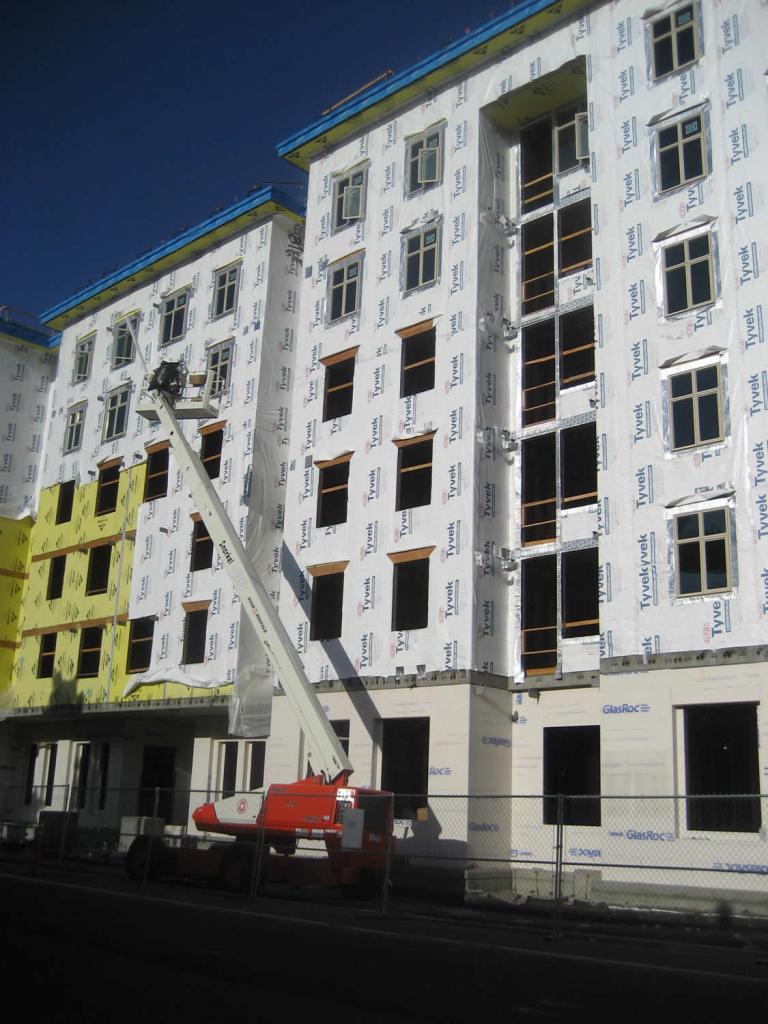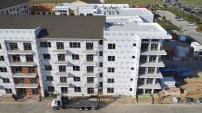In response to the idea that it costs more to build a tight multifamily building envelope, Ben Meyer has a two-word reply: “Ramona Apartments.”
Ramona Apartments, a 138-unit, low-income apartment community in Portland, Ore., delivered in 2011 for $127 per gross square foot, is on the lower-end of multifamily construction rates.
The kicker: The unremarkable price delivered a LEED™ Gold-certified asset that’s an energy champ, beating an aggressive energy use intensity (EUI) projection of 22.9 kBTU per square foot per year by a whopping 18% (18.7 kBTU/SF/year). Net effect? Tenants’ utility bills are about half of the expected monthly cost. What’s more, the developer specified a reduced-sized HVAC system that not only cuts up-front costs but reduces ongoing operating and maintenance expenses. Going green yields a fatter ROI.
Building Envelope Focus
Meyer says the budget-constrained developer achieved the result by focusing attention on an exceptionally tight building envelope.
“It’s a misconception to think making a tighter build envelope costs more,” says the DuPont building science architect and LEED™ AP®. “It’s not about the materials, either. It’s about making sure that you specify, assemble, and install envelope materials the right way.”
Military Precision
Meyer cites the lessons of another multifamily property developer, the U.S. Army Corps of Engineers. With the U.S. Army’s daunting housing requirements—keeping service members and their families comfortably, affordably sheltered without long-term mold and rot risks—they had to identify a taxpayer-friendly, high-performance way to mitigate building operating costs. Today, all U.S. Army housing meets rigorous air-tightness standards.
“The U.S. Army Corps of Engineers is a strong advocate of airtightness,” reports Meyer. “They understand that by building a tight exterior wall system, they gain a free resource that pays sizable dividends year after year. Their airtightness requirements are 60% below standard energy code requirements.”
Black Paper?
Meyer concedes some developers and builders still believe it costs more to construct the envelope to a higher, tighter standard. “They default to what the minimum code is for weatherization and water resistance. Sometimes air movement is overlooked, an energy code requirement,” Meyer observes.
“Black paper does not manage air movement. Yet today some envelope consultants still specify black paper,” he notes. For Meyer, the challenge for multifamily developers and owners isn’t about which product is best. It’s about education and applying that understanding in an economical way to the project. The good news is, that understanding carries financial benefits that eclipse traditional exterior wall performance.
LEED v4
The industry has taken notice too. Meyer says the new LEED v4 standards vastly expand the scope of LEED certification in multifamily applications. “There’s an even larger opportunity for multifamily developers on enclosure commissioning, envelope commissioning, and measuring performance. When you measure performance, getting all the pieces right becomes even more critical.”
For multifamily owners looking to differentiate themselves in a crowded leasing and sales marketplace, LEED v4 certification is destined to become a badge that delivers extra visibility and value.
For a detailed analysis of Ramona Apartments, visit here.

